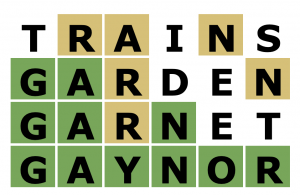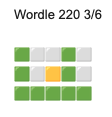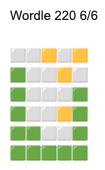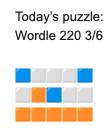 You may have noticed those little boxes on your social media feed of late. It seems like everyone is playing Wordle these days!
You may have noticed those little boxes on your social media feed of late. It seems like everyone is playing Wordle these days!
The Orton-Gillingham Approach (OG) is a direct, explicit, multisensory, structured, sequential, diagnostic, and prescriptive way to teach literacy when reading, writing, and spelling does not come easily to individuals, such as those with dyslexia. It is most properly understood and practiced as an approach, not a method, program, or system. In the hands of a well-trained and experienced instructor, it is a powerful tool of exceptional breadth, depth, and flexibility.
Gaynor’s reading curriculum is based on the Orton–Gillingham approach and individualized to meet each student’s needs. Gaynor’s Orton-Gillingham Instructional Program has been officially accredited by the Academy of Orton-Gillingham Practitioners and Educators. As such, we are an Organizational Member of the Academy and a member of the Academy’s Council of Accredited Programs, one of only two schools in the New York metropolitan area to be so certified.
We had a theory that our OG-trained faculty members might have some helpful hints for Wordle players — and asked them if they thought they had an advantage due to their knowledge of OG patterns and theory.
Here’s what they said (along with some of their grids from the January 25 puzzle):
Sloan Shapiro, Reading Chair and Lower Division Writing Coordinator, said, “I play these daily and use my knowledge of OG all the time.” She continued, “I think in terms of vowel teams, consonant clusters and digraphs and ‘magic e’ first, because I know they’re more common in shorter words. If that doesn’t work, I start to focus on vowel placement, because I figure I have a VCV word or r-controlled vowel.” [Note: VCV means vowel-consonant-vowel, and is a pattern seen in many two-syllable words like “hotel” or “visit.” An r-controlled vowel happens when an r immediately follows a vowel, creating a new sound, like “pearl” or “party.”]
In Head Teacher Kathlyn Kolenda and Assistant Teacher Tzivia Fishman’s Silver Cluster reading group, the students are working on their word building skills by playing Wordle. They said, “Playing this game, we noticed the importance of vowel teams. We are using it as a warm-up where the whole class can participate and see the word form. We find it to be a fun way to incorporate OG skills in a game format. We encourage others to give it a try!”
Blue Cluster Head Teacher Chon Smith wrote, “I play Wordle every day, and I definitely use my OG training to help.”
Kate Adlin, Educational Evaluator for Admissions, said, “Obsessed — I’ve been getting answers in two moves.” Recently there was a word that started with “KN,” and Ms. Adlin’s OG training paid off: “My first guess was flunk. I knew the nk were correct but in the wrong spot and immediately thought that kn is a common beginning blend.”
Technology Teacher Joel Levin’s tip was, “Don’t feel you need to use the letters you’ve already figured out. Sometimes it’s better to play a word you know is wrong if it gives you new information.” He also called attention to the fact that there is a “colorblind” setting, saying, “It’s always good when game designers think about accessibility!”



